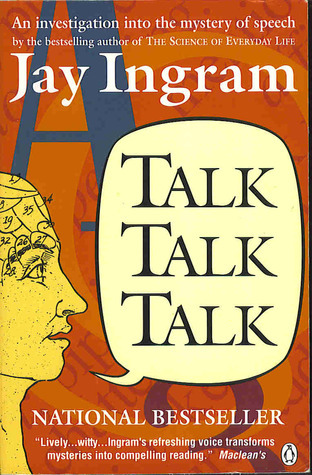
Talk, Talk, Talk: An Investigation into the Mystery of Speech
Book Description
What if the key to understanding humanity lies in the words we speak? Dive into 'Talk, Talk, Talk: An Investigation into the Mystery of Speech' and unravel the captivating enigma of communication. Journey through the evolution of language, explore the psychology behind conversation, and discover how speech shapes societies and relationships. Each page crackles with fascinating insights and vivid illustrations of how sound connects us, or tears us apart. As layers of meaning unfold, the question looms: What secrets of the human experience are locked within our conversations waiting to be uncovered?
Quick Book Summary
"Talk, Talk, Talk: An Investigation into the Mystery of Speech" by Jay Ingram delves into the remarkable phenomenon of human speech, tracing its biological roots, cultural evolution, and psychological implications. The book explores how spoken language distinguishes humans from other species, highlighting the complexity of phonetics, grammar, and social interaction. Ingram traces the evolution of language, examines what happens in our brains during a conversation, and uncovers the social power of words. Through vivid examples and accessible science writing, he reveals how speech acts as both a bridge and barrier in personal and societal relationships. Ingram also raises questions about the hidden meanings and intentions within everyday talk, finally suggesting that an understanding of speech could unlock deeper secrets about humanity itself.
Summary of Key Ideas
Table of Contents
The Evolutionary Origins of Speech
Jay Ingram begins his exploration by tracing the evolutionary origins of speech. He discusses how the capacity for language set Homo sapiens apart, delving into fossil evidence in the skull and throat that suggest speech readiness. The text examines how other animals communicate, noting both the similarities and radical differences between animal signals and human speech. Ingram lays out the building blocks—phonetics, grammar, syntax—and demonstrates how these intricate systems could have evolved to serve our ancestors’ needs, shaping the way societies formed and functioned.
Cognitive and Neurological Foundations of Language
Transitioning from evolution, Ingram turns to the cognitive and neurological underpinnings of language. He unpacks the brain structures responsible for language production and comprehension, such as Broca’s and Wernicke’s areas, and interrogates how babies acquire language with astonishing speed. The book illuminates how mental processes support an effortless stream of words, while highlighting the fragility of speech as seen in cases of aphasia and other language disorders. Ingram integrates research findings about how language affects memory, thought, and even perception of reality.
The Social Dynamics of Conversation
Ingram then addresses the social dimension of speech, showing how conversation orchestrates human interaction. He details the unwritten "rules" that govern turn-taking, politeness, interruptions, and storytelling. Through examples, he illustrates how subtle shifts in tone, inflection, and choice of words can change the meaning of an interaction, influencing trust, empathy, and social hierarchies. The book explores why misunderstandings occur, and how language both unites and divides groups, sometimes acting as a tool for exclusion or manipulation.
The Power and Pitfalls of Communication
The author investigates the immense power—and the pitfalls—of communication, examining how propaganda, deception, and persuasion operate through speech. He explores the emotional content embedded in spoken words and how rhetoric and narrative can mobilize movements or propagate stereotypes. Ingram delves into the risks of miscommunication, exploring how even a slight misinterpretation can cascade into conflict, and stresses the importance of clear, empathetic communication for healthy relationships and societies.
Language, Identity, and Social Change
Finally, Ingram connects language to identity and social change. He tracks how new words and expressions spread, reflecting societal transformations and individual creativity. The book examines dialects, code-switching, and the evolution of slang as markers of belonging or resistance, and contemplates the future of speech in an era of rapid technological change. Through this journey, Ingram leaves the reader with a deeper appreciation for the everyday miracle of speech, suggesting that by understanding talk, we gain profound insights into what it means to be human.
Download This Summary
Get a free PDF of this summary instantly — no email required.





